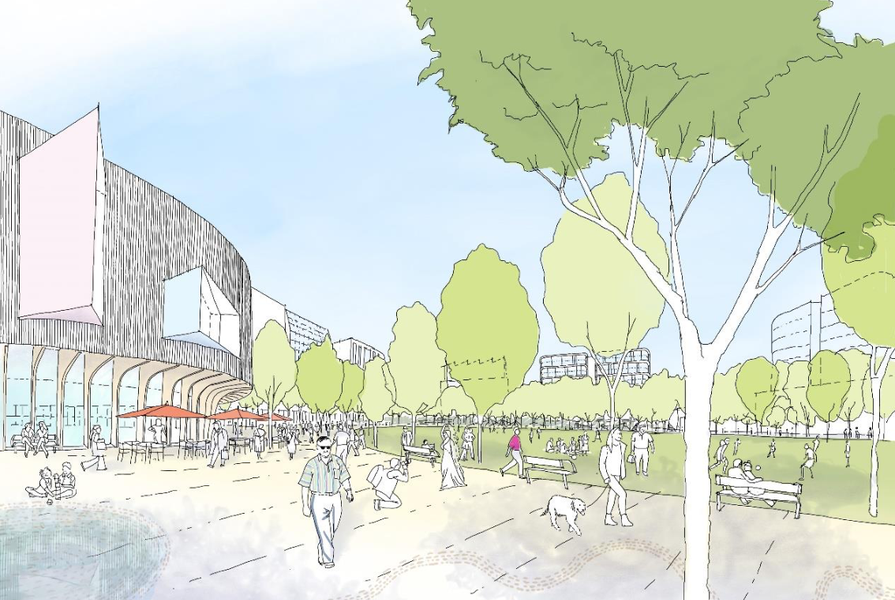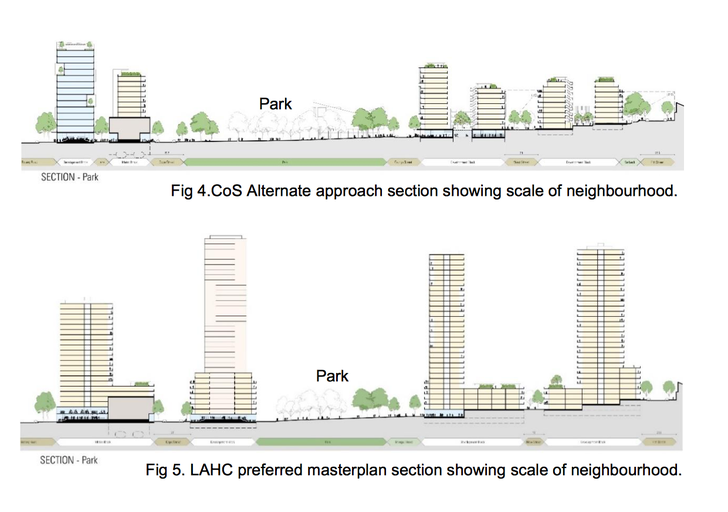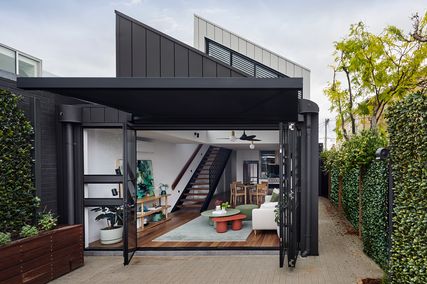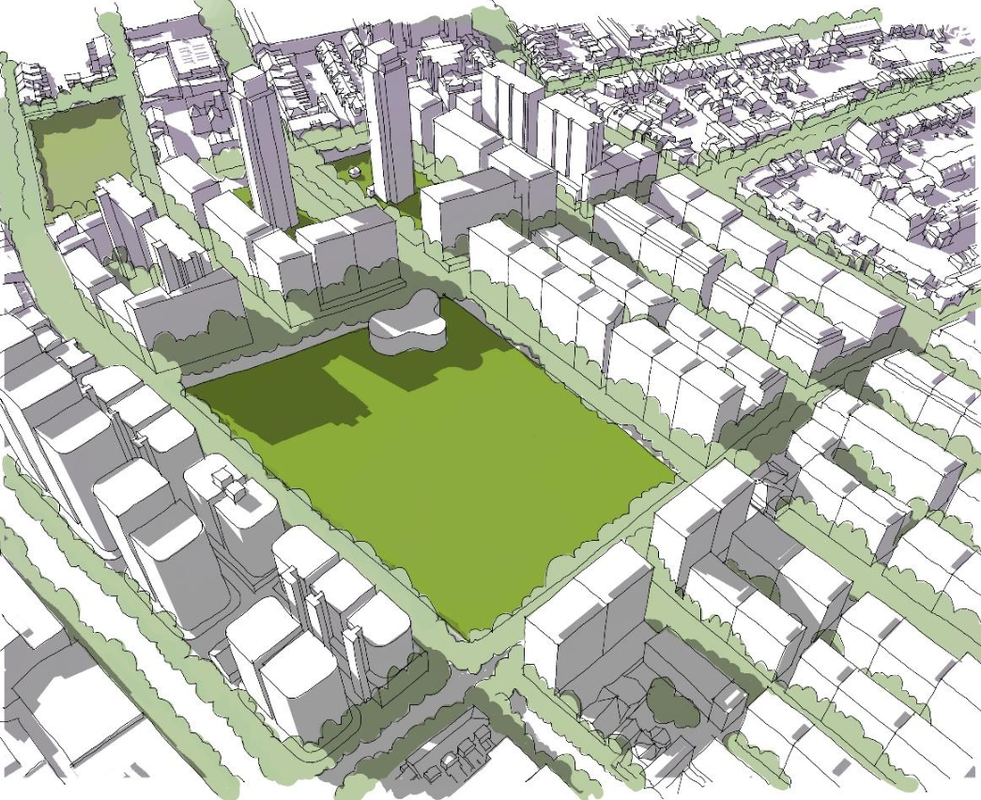The Matavai and Turanga public housing towers in Sydney’s Waterloo Estate would be saved under an alternative proposal for the site’s development from the City of Sydney.
The two towers have been at the centre of community backlash to the state government’s proposal to raze all existing buildings in the Waterloo public housing precinct, with the towers’ residents filling their windows with coloured light as part of the “We live Here” campaign chronicled in the documentary There Goes Our Neighbourhood.
The Matavai and Turanga public housing towers lit up as part of the “We Live Here” campaign.
The NSW Land and Housing Corporation’s (LAHC) preferred masterplan for the site would see the buildings replaced with “about 6,800” dwellings built over 20 years, with towers of up to 40-storeys and a target of 30 percent social housing and 5 percent affordable.
There are currently 2,012 social housing units in the estate, which means the proposed development mix would see the number of social housing units stay roughly the same, while the number of private housing units would increase massively.
At an extraordinary meeting on 4 March, councillors endorsed the alternative proposal, which envisions a vastly reduced scale of built form and a large signature park at the centre of the precinct.
The council also resolved to call on the state government to hand over control of the Waterloo Estate and Waterloo Metro Quarter redevelopment to the council. The alternative plan will be presented at a public meeting happening in Waterloo on 6 March.
Though not yet fully developed, the council’s alternative proposal puts forward a number of key principles for future development.
The council would seek to reduce community disruption by ensuring that all residents could be housed within the estate or immediate walkable area throughout construction. It would reduce building heights, with most buildings to be seven to nine storeys, with 12 to 13 storey buildings around the park, and some four-storey buildings through the precinct. The precinct’s assortment of small and large parks would be consolidated into one “signature” central park, in order to increase the hours of sunlight in the park and offer greater flexibility of program. The 30-storey towers Matavai and Turanga would be refurbished, thereby reducing the number of private dwellings required to fund the development by at least 1,082.
The City of Sydney’s plan would reduce building heights, with most buildings to be seven to nine storeys, with 12 to 13 storey buildings around the park.
Sydney mayor Clover Moore has been a fierce critic of the state government’s preferred masterplan, which she labels a “gross overdevelopment, unprecedented in Australia.
“The NSW government’s proposal is little more than a glossy brochure and a press release,” she said in February.
“The brochure fails to mention that the open space and parks will be shrouded in shadow by multiple towers up to 40 storeys high. The state government’s planning experiment will negatively impact on the lives of our most marginalized residents, and trample on the rich history of the Aboriginal and Torres Strait Islander communities in the area.”
The LAHC presented its preferred masterplan at a community meeting on 7 February 2019, after exhibiting three options for the site in 2018.
On 11 Febuary the City of Sydney resolved to oppose the proposals for both the Waterloo Housing Estate and the Waterloo Metro Quarter. Council is holding a public meeting at Alexandria Town Hall on 6 March from 6 pm, where its alternative plan will be presented.
“Residents in Waterloo are telling me they are deeply distressed and concerned,” said Moore. “The government’s so-called community ‘consultation’ has lacked any proper detail and ignored the impacts.
“We’re holding a public meeting to discuss the government’s proposal with all concerned Waterloo residents and businesses. We need to find a better way forward.”






















